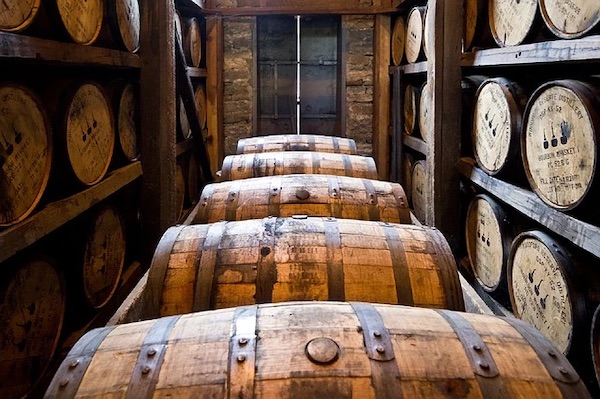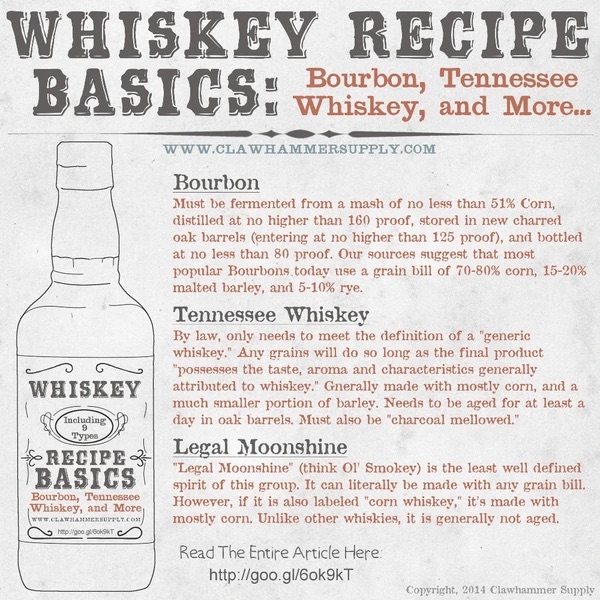It was around this day back in 1785 that a Baptist teacher and preacher named Elijah Craig founded a distillery in Kentucky using corn to make whiskey. Craig has sometimes been claimed to have been the first to age the whiskey in charred oak casks, “a process that gives the bourbon its brownish color and unique taste”. Many historians argue that dozens (if not hundreds) of small farmer-distillers west of the Alleghenies were also making corn-based whiskies at the time, which they also called ‘bourbon’, but Elijah Craig was the first to commercially capitalize and call himself the first and to fully distinguish himself from the rye-based whiskies commonly distilled in the East.
Interestingly, Elijah Craig’s older brother Lewis and younger brother Joseph Craig also became Baptist preachers. In fact, his older brother Lewis was imprisoned with John Waller, James Childs, James Reed and William Marsh in the Fredericksburg jail for several weeks, for preaching without licenses. Elijah became the pastor of Blue Run church. In 1774, the convention of independent Baptists designated Elijah Craig and John Waller as apostles (missionaries) to evangelize north of the James River.
Craig later became politically active as the legislative liaison of the general convention and general association to Virginia’s legislature as well as the ratification convention of 1788.[12] As such, he worked with Patrick Henry and James Madison to protect religious freedom federally and in Virginia after the Revolutionary War.
Seeking religious freedom and economic opportunity, in 1781 Elijah’s brother Rev. Lewis Craig led an exodus of up to 600 people known as “The Travelling Church” to the area of Virginia known as Kentucky County. Elijah Craig did not go with this group but followed a few years later. In 1782 (just after the Revolutionary War), Elijah Craig led the immigration of his congregation from Orange Co., VA, and purchased 1,000 acres in what was then Fayette County, where he planned and laid out a town originally called Lebanon, which was incorporated in 1784. In 1790 the town was renamed Georgetown in honor of Gen. George Washington, first president of the United States. Craig preached at several churches in this area with John Waller
Around that same time period, Elijah Craig built his distillery in what was then Fayette County. The location later became part of Woodford County in 1789, and then Scott County in 1792. It was never in Bourbon County, as some have claimed. As it happened, both Fayette County and Bourbon County were named in honor of the noted Revolutionary War Gen. Gilbert du Motier, Marquis de Lafayette, a French aristocrat of the royal House of Bourbon. Bottom line, we can look back now and see lots of big whiskey names being tossed around out in that part of the country.
As I mentioned above, many whiskey historians argue that corn-based whiskey was being distilled in that area several years prior to Criag. The story is a big wave of Scotch-Irish immigrants landed in the upper northeast between 1825 and 1875 and headed south to the great American frontier of Virginia, the Carolinas, Tennessee, and Georgia, with many actually calling home the Valley of Virginia, today’s Shenandoah Valley.
A settler’s first job on arriving in the wilderness was to clear enough land for his cabin and then get in a crop, usually corn, which was easy to produce with only a hoe. Food wasn’t a problem because the forests abounded with wild game of all sorts and the rivers were full of fish. What the settler needed was a cash crop to enable him to pay his taxes and thus retain his precious property, usually a few hundred acres. This was where his whiskey-distilling became an extremely important adjunct to his farming. With their whiskey, they had “legal tender” to pay their taxes and obtain the few necessities that they could not make for themselves, such as salt, nails, and cloth.
Many in the area could produce from forty to sixty bushels of corn per acre (and sometimes more on rich bottom land), it was virtually impossible however for them to get ground cornmeal or flour to markets on the seaboard. They could easily and economically convert their corn or rye into spirits, however, and then with a packhorse, transport the liquid-equivalent of twenty-four bushels of corn. A packhorse could carry eight bushels of grain, which would fetch about two dollars, not enough to cover the transportation cost. However, a packhorse could carry two eight-gallon kegs of whiskey, which would fetch at least 16 dollars. Practically every farmer out in that area, therefore, made whiskey! Even back then, farmers were trying to be creative and find alternative ways to increase bottom line profits:)
Remember, bourbon is whiskey, but not all whiskey is bourbon! What makes bourbon distinct from other whiskeys is the way it is manufactured and aged. All whiskey is spirit made from fermented grain and then aged in barrels. But the kind of grain and the kind of barrels determines the variety of whiskey. Per the American Bourbon Association, in order to be classified as bourbon, a whiskey needs to be distilled from a mixture of grains, or mash, that’s at least 51 percent corn. That corn gives bourbon its distinctive sweet flavor. Bourbon also must be aged in new charred oak barrels, and cannot include any additives or colorings. Scotch whiskeys are typically made from malted grains. Bourbon tends to be sweeter, while Scotch tends to have a more intense smokiness. (Source: BrewingBlog; Wiki; History)







